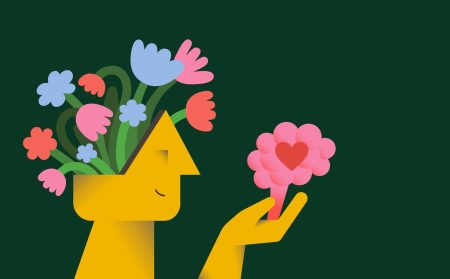Whether discussing heatwaves, floods, or droughts, climate change has likely become a regular topic in your daily conversations as it has for me.
In times of trouble, many of us turn to communication platforms like WhatsApp and Instagram to reach out to the people in our lives for assistance. And yes, we add emojis like guys 🤯 😡 🤷🏻♀️ 🥵 🥶 at the end of our messages to add emphasis or visually express our emotions.
But for a while now, I’ve felt guilty about using these colorful symbols when talking about climate change, and here’s why.
As a journalist, I hear stories about the devastation individuals experience after a disaster has hit their city or village. A farmer tells you his sheep have died of thirst because of a drought, or an elderly woman might describe how wildfires have burned her house and destroyed everything inside, including her memories.
Seriously, which emojis do you send victims to convey sympathy and respect for these terrible circumstances?
These guys 🐄☁️🏠🔥😥💔💧!? I mean …
Or even when the news is better, and someone tells you they have survived a hurricane and managed to move their entire family to safety—what will you do?
Message a tornado thumbs-up combo 🌪️👍 to demonstrate your relief?
Then I started to wonder if there are any emojis that can illustrate the realities of the climate crisis more appropriately and effectively.
I did a little digging and found some information which I’d like to share👇🏽.
As it happens, it’s also World Emoji Day, a perfect opportunity to highlight some of these facts and see what experts have to say about the significant role a wider range of environmental emojis can play in helping communities tackle climate change.
Missing In Action
Emojis are approved by a California-based nonprofit called Unicode Consortium. Every year, a subcommittee releases new emojis that will update the existing keyboards we use on our various electronic devices.
Until now, UTC has not approved a solo climate change emoji and went on the record rejecting 👎 its proposal in 2017 saying people can use two separate emojis like these 🌎🔥 ones instead!!!
A couple of years later, renewable energy advocates were also let down when Unicode vetoed an application for a wind turbine. To add insult to injury, fossil fuels, the main culprit behind climate change have oil and petrol emojis 🛢️⛽️ representing them.
To find out why, I emailed the Unicode Consortium, but they didn’t respond to a request for comment.
As I continued my search for the right climate emoji, I came across a set of disaster and resilience icons called Climoji that can be downloaded 👈🏻 for free.
The Climoji project was launched out of New York University in 2018 by artists Marina Zurkow and Viniyata Pany who along with students and faculty members, wanted to make it easier for people to communicate the dangers of climate change.
Illustrations like melting ice caps, sea level rises, plastic pollution and loss of biodiversity are some of the images that Climoji has, and UTC doesn’t.
“We operate similarly to the Unicode emoji set yet I doubt they would ever appear in that official one,” says Marina Zurkow, co-founder of Climoji.org.
“Seven years on since we created Climojis, perhaps that is now part of their strength, that exclusion, like the proverbial elephant in the room,” adds Zurkow.
I believe “they have had a lasting impact because they are simple like the standard emoji, and the most successful Climoji explicitly rides the line between tragedy and comedy,” she adds.
Painting A Real Picture
According to new data issued by the EU’s Copernicus Climate Change Service, the world has baked every month for a year above 1.5 degrees Celsius (2.7 degrees Fahrenheit), a critical warming benchmark set by scientists.
The report found temperatures between July 2023 and June 2024 to be the highest on record causing faster and harsher climate-induced events for many people around the world.
So, “for those communicating the realities of extreme heat, flooding or displacement – to name only a few examples of the new normal – having more relatable ways to make messages more easily understood, compact, and approachable could literally save lives and livelihoods,” says Nancy Groves, chief of digital strategy in the 🇺🇳 United Nations Environment Programme’s communications division.
The thing is, “emoji use cuts across generations, borders and languages – just like the climate crisis,” adds Groves.
Therefore, “A wider array of options will be in demand as everyone, everywhere, will be looking for ways to convey their experiences living on a warming planet,” she adds.
The good news is, that designers, artists and environmental experts are already working to create and establish more of the emojis that we need to talk about climate change 😊.
Read the full article here









